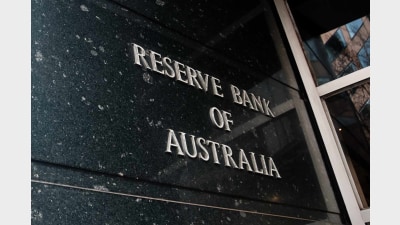Learning from big super’s approach to risk management


It’s safe to say you don’t have to be working in finance to experience a growing sense of unease.
For a few years post pandemic the global economy has been characterised by increased uncertainty, thanks to economic factors ranging from rising interest rates, rampant inflation, cost of living pressures, supply chain issues, and now – globally, at least – some banks are starting to fail. All this in the context of a weakening Chinese economy and a likely recession in the US.
But what impact will a significant economic downturn have on people with self-managed super funds (SMSFs) and their advisers?
We know that the traditional SMSF portfolio comprising of a 60/40 split of equities and bonds as well as exposure to Australia’s favourite asset class, property, is unlikely to perform as well as it has over the past decade given this disrupted market.
And with rising interest rates, it is anybody’s guess whether people coming off fixed mortgage rates and facing huge increases in repayments will counter the chronic lack of rental housing and increased returns landlords are receiving from tenants.
People who have or manage SMSFs generally don’t have a team of economists and financial analysts behind them, so for SMSF holders and their financial advisers or planners, looking at the fund managers that do can offer useful insights. In this, climate, you only need to look as far as the major super funds to see that money managers are preparing for a downturn.
What is concerning is just how many people with SMSFs are unprepared to weather a significant downturn, as was demonstrated in 2022 when conservative-index investing was a train wreck and many investors were exposed to significant losses.
The number one thing that advisers and investors can learn from big super’s current approach to managing risk is to seek genuine diversification. This means seeking investments that are truly uncorrelated by exploring different asset classes, regions, and actively managed investment strategies.
Now, in the eye of the storm, it is the time to reassess a portfolio’s approach to risk management.
Risk – a poorly-understood concept
Something we often hear from financial advisers is that it can be challenging to talk to their clients about risk in a way that is well understood. Risk seems to be a concept that most people intuitively understand at a surface level, but it takes on a more complex meaning in the context of super.
Risk is more nuanced than wanting to avoid losing all your money in a high-risk investment or having to delay retirement due to a lack of savings. The way we think about risk is about increasing the probability of meeting desired retirement outcomes, or how a portfolio can be set up to weather a major downturn without dropping more than say 10%, for example.
Perhaps not surprisingly, most investors don’t have the framework or objectivity to critically think about their own risk appetite. As professionals working in this industry, we think it is our role to provide those guiding questions and ensure that their investment portfolio is set up in line with their true risk appetite.
Learnings from big super
The reality is big super funds are already responding to a potential market downturn and there are some strategies we’re already seeing in action that can be applied successfully on a smaller scale for SMSFs.
- Diversification – which should always be built into a resilient portfolio – has never been as important. This means seeking investments that are truly uncorrelated by exploring different asset classes, regions, assets managers and guiding strategies. Asset classes that are not reliant on bonds and equities going up are the cornerstone of this strategy and include commodities, currencies, futures, and carbon credits. The more diverse your exposure, the better. However, there will likely be good opportunities in bonds and equities with some bond markets having already priced in the recession and available for relatively ‘cheap’ prices. It is also worth considering implementing a range of investment strategies including going long and short to further diversify your portfolio.
- Shift to liquid assets - While holding private assets can soften the impact of volatility, these investments also lock up capital and take time to exit, which is why we are already seeing a shift to more liquid assets. In a recessionary environment, this is the difference between being able to capitalise on discounted investment opportunities as they present themselves or missing the boat. By the same token, you will see large funds exiting some of their investments in riskier asset classes, which will free up further capital.
- Shift from passive to active - Following on from freeing up more liquidity to capitalise on opportunities is a general move from a passive to an active approach to portfolio management. This more hands-on approach allows you to be nimble and flexible with how your portfolio is structured and allows you to readjust your risk approach in line with market changes. Not only could a passive approach see investors unable to jump on new opportunities, but they are also more likely to find themselves taking on more risk than they are comfortable with or had planned to.
- Be disciplined - It can be hard to know where to invest during a recession when emotions are high and perceived risk feels bigger than normal. Large funds have certain disciplines in place that guide their investment decisions. You can create that discipline, just like the big managers do, to ensure that you aren’t making investment decisions on a whim. Sit down and decide how will you make decisions, what those decisions are based on, the process for evaluating new investments and how often you will relook at risk management. Write these decisions down and regularly consult them in a recessionary environment to help you see past the white noise.
Risk-targeted investing aims to maximise investment returns whilst remaining below an agreed risk limit. If you or your clients are feeling jittery about how much risk you’re carrying into a highly uncertain economic outlook, consider looking into a risk targeted investing specialist to help you better understand risk targeted investing.
The best time to become more diversified and prudent in your risk taking was yesterday, but the next best time is today.
Glen Foster is head of risk and senior portfolio manager at Atrium.
Recommended for you
High risk, high return assets will become dangerous options for superannuation funds under the Federal Government’s planned $3 million superannuation changes, writes Brad Twentyman.
Economic policy can no longer ignore the macroeconomic impacts of Australia's superannuation system and the emerging policy implications, writes Tim Toohey.
In an age where climate concerns and social consciousness dominate headlines, it’s no surprise that investors are increasingly seeking investments that align with their values, writes Simon O’Connor.
How profit-for-member superannuation funds can embed 'commerciality with a heart' and marry a member-first culture with commercial outcomes.














Add new comment